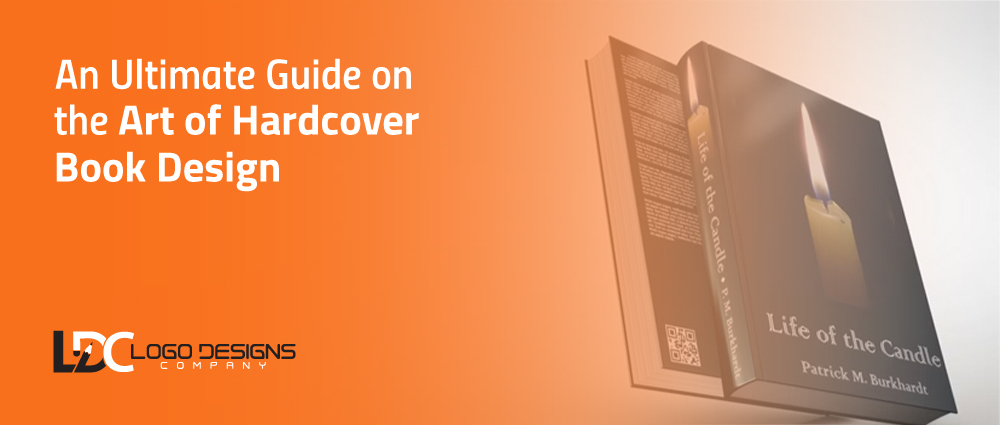When readers go to a bookstore, they are often surprised by the immense creativity and effort invested in designing book covers. People are usually drawn to things that look good, whether it’s a book or something else they buy. A well-designed cover can grab their attention right away.
Given the great number of books released each year, readers want something new and interesting since many book covers look the same. They desire a book that appeals to them with its content and provides a delightful tactile experience when holding it in their hands. So, a good book cover must have a design that stands out and is worth the time and attention of the reader.
In the ultimate guide, LDC, the top stationary and logo design company, will show how to make a good book cover. You will know how to tell a story before a reader opens the first page.
Before You Start Designing A Book, You Need To Answer A Few Important Questions:
What is the name and fame of the author? Find out if this is the writer’s first book or if they have written before. Think about their past performance and what else they’ve written because they can have set standards for cover art.
Does the genre have a known style? Readers have specific design standards for romance, science fiction, and horror books. Find a way to use these tired genre tropes to make something new and different.
Is the book intellectual, famous, or high-brow? Figure out what kind of book it is and who it is for. Literary books focus on good writing and important stories about people, while business books follow certain genre styles. High-quality books have elements of both types.
Where will the book be for sale? Consider how the book will be sold, like in regular bookstores or online stores like Amazon. Print books show affection and should look good on shop shelves. But e-books require huge, eye-catching text to stand out in a thumbnail view.
You can get a good start on designing a book by answering these questions.
Information To Collect

Format: Find out first if the book cover is for a printed book, an eBook, or both. It is essential for the design notes, print, and web use of different colour areas. Also, know how the book will look and how big it will be after printing.
There are different forms, such as paperback, hardcover, and case bound. Hardcovers can have dust jackets or cover art written on the boards.
A designer can make a book almost any size they want. But knowing what’s best for the book is essential before choosing based on looks alone. The smaller the trim size, the less text can fit on each page.
For a tight 300-page book, it will get very thick. A more comprehensive book with reasonable length feels like something other than a magazine or pamphlet and is more like a book.
Copy: It includes the front and back cover copy (sometimes called “flap copy”). It also has a bio or picture of the author, blurbs, and recommendations.
Graphics: The visual information that is less interesting but very important. Examples are printing company and author logos and barcodes so you can sell the book in stores.
Budget: The designer and the author should be aware of any extra costs during the planning process. It includes barcodes, stock pictures, ISBNs, and typeface licences, among other things.
Unleash the power of design for your brand! Elevate your business with our expertise in logo design, stationery design, and web design services.
How To Make A Book Look Good In Six Steps?


Now that you have all the information in one place, it’s time to start planning.
Know What Goes Into Making A Cover
The front, back, and spine are the three parts of a book cover. They are cut to size before you combine a hardback book’s pages with a paper cover. The pages of a hardback book make a cardboard “case” covered in cloth or paper. The pages are then stitched or stuck together.
The paper cover that goes around the book has flaps on both sides. On an open hardcover book, you see coloured or printed pages stuck to the boards. These are the endpapers. Endpapers are a beautiful extra set of pages that bookmakers can add to a book project to finish it off.
Many printers offer high-end choices like thicker paper weights, hardbacks wrapped in linen, foil stamping, varnishing, and embossing. These choices raise the price of each book and give your design a big boost.
Market Study
Genre books are better in paperback, while creative fiction, thrillers, and biographies are better in hardcover. If the book is to take it on a bus or to the beach, it must be a paperback. In libraries, people tend to read more books with hard covers. Think about the price point when writing your book.
Choose A Way To Go With The Design


When designing a book cover, consider the message the author wants to convey. Look at famous book covers for inspiration and visit a local shop to feel different paper types. Keep track of what you like and don’t like for future reference.
Decide What The Design Should Focus On
When designing the dust jacket, consider it an opportunity to market the book. Identify the critical aspect of the story that sets it apart and would entice readers to purchase it. Is it a specific character? The writing style? The historical setting? To reference a popular movie, find ways to capture its essence without creating a poor imitation. The author can make this book into a series or consider writing a second book.
Think about linking the future titles to the first to raise the author’s brand. If an author is well-known, their name can be the best way to get people to buy their books. But for most authors, their book needs to stand out from others on a shelf and make an impression.
Choosing The Fonts And Graphics


One of the many great things about book covers is that you can use any visual design. Because writers have such vivid minds, designers have to make covers accurately. Designers must show all of the fantastical worlds that writers’ pages show.
The problem is that picking a specific style can take much work. A picture, a piece of art, or a random pattern can be on the front of a book. They can use a bold, modern style or doodles resembling cartoons.
Think about what the graphic style says to a book buyer. It wouldn’t make sense to put a picture of New York City in a book that doesn’t take place there. Women’s stories often use soft typefaces and natural settings, while old pictures give a sense of history.
It is also essential to think carefully about where you get your photos. There are a lot of books on the shelf that use stock pictures. But a different book can come out with a cover. The cover looks exactly like the one in the other book.
Fonts are the same way. Choosing typefaces that fit the period in which a book is set is important. It is essential when comparing two books. A Civil War nonfiction book with a book set 200 years in the future in a futuristic space setting. The book can work well with a bold sans-serif font.
Ask For Feedback


Choosing a cover for a book should be about more than just what looks great. Consider how a wider audience will perceive it. Get feedback from others without giving any context, and see what they think the book is about based on the cover. A cover with a young child can make people assume the story is from a child’s perspective or evoke certain emotions.
Understand What The Printer Needs.
For a book project, create a single document with all graphics, including text for covers, spine, and flaps. Use high-quality PDF or .ai/.eps if required. Use CMYK colours for the best printing results.
Try foil stamping for your second document to add a unique touch. You can specify where you want the foil; precise measurements will ensure accurate placement near the edges of the spine. For high-quality prints, files need full bleed with no white margin. Industry guidelines suggest a bleed of .125 to .25 inches. Check with the printer to ensure the correct setup and avoid errors that could cause text to appear off-centre.
Now It’s Your Turn To Make A Book Cover
The goal of every writer is to have their thoughts turn into a beautiful book cover. After reading this, you should feel ready to start your next book design project.
If you don’t want to mess around with book cover design or don’t have much time for your book cover design, contact us now! We are a top logo, stationary, and website design company offering the best logo design, website design, and stationary design services.


